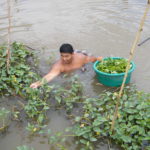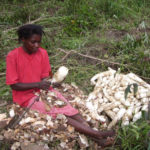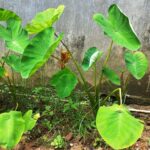Cashew trees (Anacardium occidentale) are native to areas around Northeastern Brazil. Portuguese colonists brought them around 1560 to Goa, India, from where they spread to Southeast Asia and Africa. Therefore, cashew products already have a long history in Goa and are considered a local food item. Currently, Cote d’Ivoire, India, and Vietnam are the primary producers of cashew nuts. In 2020, India produced 18% of the world’s cashew nuts.

Cashew harvesting season is in Goa from about March to mid-May each year. The cashew fruit, as a whole, consists of the cashew apple and the cashew nut. The cashew apple is a pseudo-fruit, a swollen hypocarp, and the cashew nut is the fruit (or drupe), which consists of shell and kernel. The shell outside the kernel consists of the hard shell and a growing part called the testes.
Cashew apple
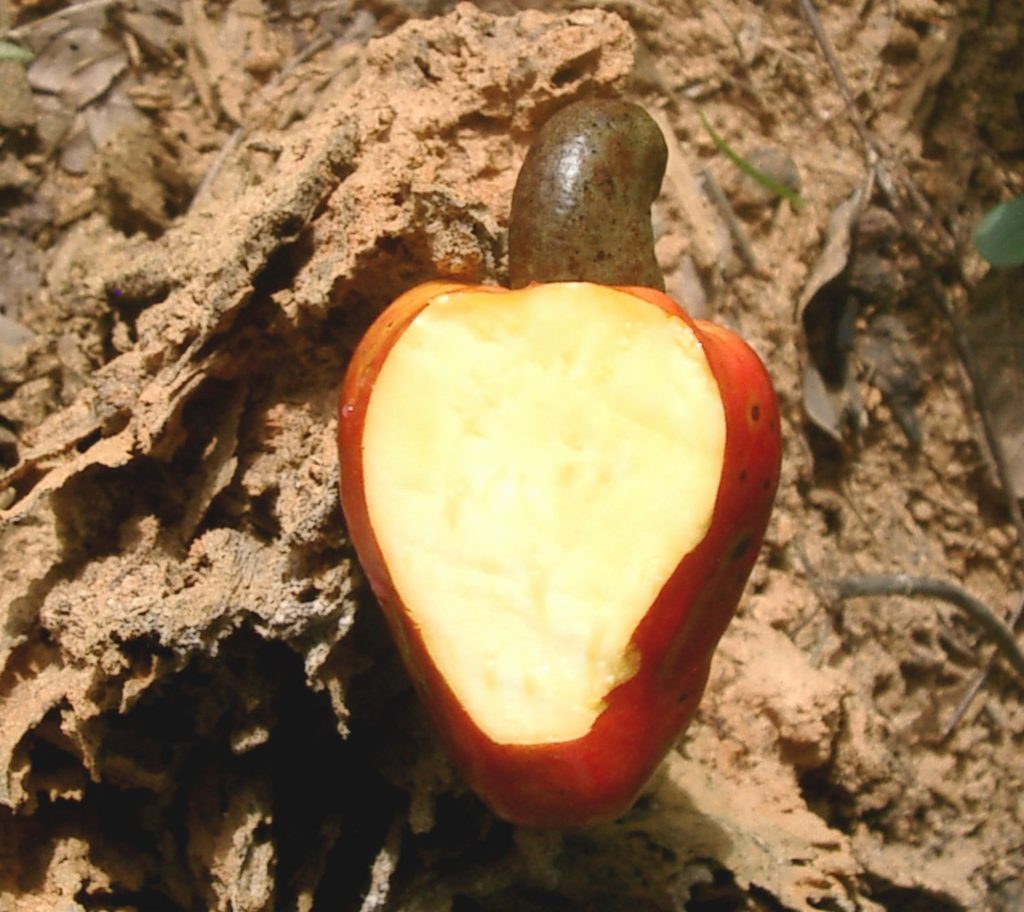
The cashew apple is a heavily swollen pedicel of the cashew nut (which is a drupe with very thin fleshy skin). This ‘apple’ is very juicy, pleasantly fruity tasting with an astringent touch, and has stringy fibers inside. Cashew apples are mainly eaten fresh and outdoors, as it is challenging to avoid dripping juices around. And – these apples getting bruised when falling from the tree, and unbruised ones got a short shelf life.
In Goa, they are also used to cook the local curry dish ‘Kaju Shaak’ and prepare a cashew apple cake. More popular and widespread are squeezing out the juices and either ferment them or not. This juice is either drunk fresh, or when fermented, vinegar can be produced, more popular, Goan Feni is distilled from them, with an alcohol content of finally 40% and above.
Cashew nuts
Green, mature cashew nuts
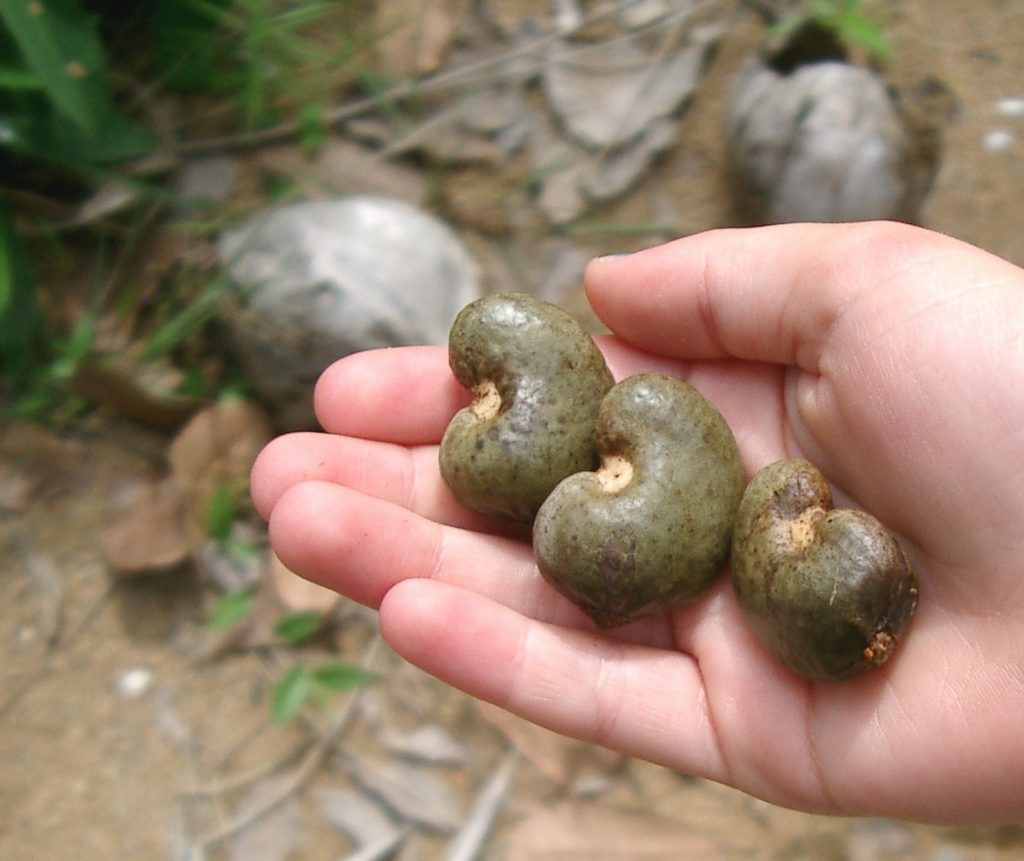
Green, mature cashew nuts are taken off the apple by a screwing action. They will be dried and afterward directly roasted on the ground or in a metal pot with a perforated bottom. The best fire fuel is dried palm leaves, which burn hot and can spread quickly to areas where nuts must be roasted. The nuts are directly spread onto dry ground, covered with palm leaves, and fire is lit or put into the perforated pot.
When roasted, nut shells release anacardic acid, which causes an allergic skin rash on contact. Nutshells should, therefore, never be roasted inside a closed room but always outside in the open air, and the person handling the roasting should not get into the smoke.
Anacardic acid is a liquid resin that will drip to the ground and, when cooled down, is collected by people and used as a varnish or waterproofing agent, e.g., for boats. During roasting, anacardic acid will start burning on the nut shells, and all the burning nuts will be spread out (or dipped from the pot), squashing the fires. After cooling down, the nuts are cracked open, and the kernels can be eaten. An anvil of inverted coconut shell halves or stones can be used for breaking the nuts and as a bludgeon, either a wooden pestle or stone.
Sun-tanned cashew nuts
Sun-tanned cashew nuts fell to the ground and were naturally roasted by the sun. These cashew nuts take on a brownish (‘sunburnt’) color outside. They can be opened without roasting, and the kernels can be eaten. I personally, however, would also roast these nuts just to make sure there is no anacardic acid left.
Green, baby cashew nuts
Green baby cashew nuts, where the pedicle is still not swollen up, forming the apple. These can also be cracked open and eaten without roasting. But again, I would roast all types of cashew nuts, whether green baby, green mature, or sun-tanned.
Cashew kernel
Roasted cashew kernels are typically used as a snack food in Western cultures and as ingredients for cooking in either whole or powdered form in Eastern cultures. Raw cashews contain about 5% water, 30% carbohydrates, 44% fat, and 18% protein and have a calorific value of 553 kcal/100g.
Cashew shell
In former times, cashew shells were buried in the ground, as they were regarded as toxic due to their contents of phenolic lipids, anacardic acid, and cardanol, and were a source of environmental pollution. Nowadays, these shells are a new raw material, as the remaining oils in the shells are extracted and traded under the name CNSL (Cashew Nut Shell Liquid). CNSL is a natural resin found in the honeycomb structure of cashew nutshells. The main applications nowadays are as anti-termite paints of wood and for producing carbon-composite products.
Cashew testa
The growth part of the nuts is also called ‘Cashew husk’ or ‘Cashew silk shell’ and is used as a supplement for animal feed, a dye, and a source of tannin for the tanning industry.
Lessons learned about cashew apples and -nuts in Goa
- Cashew nuts are deeply ingrained in Goan culture
- Roasting cashew nuts is an unhealthy affair, and care has to be taken not to inhale the smoke.
- Gloves or other reliable skin protection should be worn for shelling roasted nuts.
.


